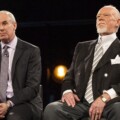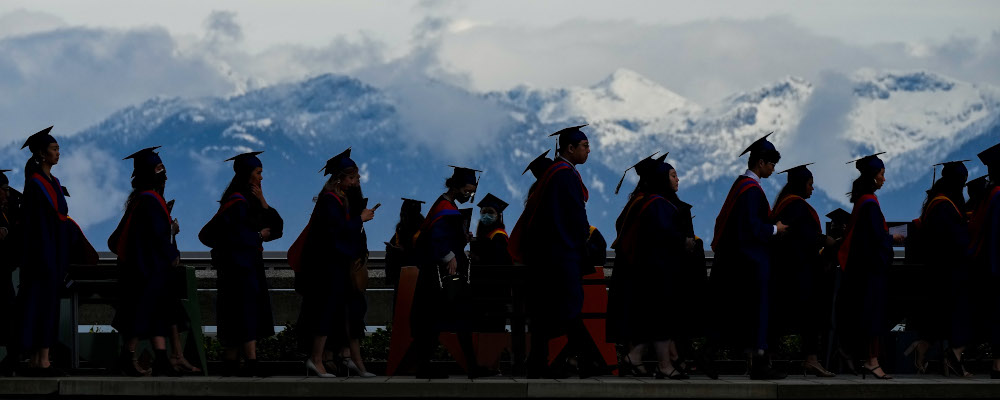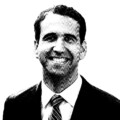Much has been written in recent years on the state of our universities. Many have expressed concern that universities have lost their way: they have forgotten or abandoned their mission to be truth-seeking institutions rather than partisan enterprises that favour certain worldviews and shun others.
These critiques are valid. From refusals to allow certain views to be expressed on campus to making it practically impossible for certain scholars, on account of their beliefs, to remain employed at their universities, the classical understanding of the university as a place where the freedom to question, investigate, and debate is robust and largely unhindered has been seriously injured in our time.
But the situation might not be quite as dire as we sometimes think. The current critiques of universities relating to academic freedom thankfully do not reflect my experience at the university where I work. During my time at the Peter A. Allard School of Law at the University of British Columbia, I have found my academic community to be one that by and large welcomes intellectual pluralism and encourages the pursuit of truth.

It would not take an extensive search online for my students or colleagues to form the view that I am a Christian and a conservative. Based on the prevailing critiques of our universities, I should be bracing myself for professional and personal adversity due to my non-progressive viewpoints. Perhaps I should not have survived for more than a year or two. Maybe I should not have even been hired to begin with.
Yet, four years later, I can share that my experience has been overwhelmingly positive. I have thoroughly enjoyed engaging with students inside and outside of the classroom. They have been respectful, bright, and intellectually curious. I have learned as much from them as they have learned from me—if not more. I look forward to being in the classroom, day in and day out.
My colleagues, from day one of my time at Allard Law, have been welcoming, generous, and eager to help as I navigate the early years of my academic career. Even when I have had reason to think that a colleague does not agree with my views, our exchanges have almost always been cordial and constructive.
I do not mean to paint a romanticized picture of my workplace. There have certainly been moments when I have felt that I had no choice but to bite my tongue out of concern for what might happen if I were to speak out on this or that topic. But the general tenor of my experience at Allard Law certainly swims against the current critiques of universities. When my friends who expect to receive a negative report ask me about my experience on campus, they are pleasantly surprised to learn the opposite.
Again, I am not suggesting that our campuses today are perfect havens for the pursuit of truth. I have previously written on this topic in these pages. I would not have helped to organize a lecture on this topic at my institution if I did not think there was major work to be done on this matter. The stories of cancellation, intimidation, and harassment at universities are disturbing and deserve our attention.
In light of these stories, some contemporary voices suggest that the era of the university may be over. For my part, I do not believe that the ship has sunk. This ship can be salvaged, returned to harbour, and repaired. Considering the countless contributions that universities have made and continue to make to our societies and civilizations, I believe we are duty-bound to undertake this search and rescue effort.
The good news is that we have had centuries of practice during which the truth-seeking mission of the university became firmly entrenched. These foundations do not erode overnight, though they are fragile because they depend upon the individual conduct of the members of a university. As more individuals behave in ways that betray the purpose of a university, this purpose is more likely to fade out of view.
For much of the history of the university, the strength of the commitment to open inquiry and freedom of expression on campuses—all in pursuit of knowledge and truth—appears to have mainly relied on the goodwill of the individuals who at any given moment in time formed the university population.
As that commitment has come under pressure, some universities have sought to reinforce this commitment by adopting statements of principle. One of the early high-profile examples of such a statement came from the University of Chicago in 2014. The “Chicago Statement” reads in part:
Because the University is committed to free and open inquiry in all matters, it guarantees all members of the University community the broadest possible latitude to speak, write, listen, challenge, and learn … [I]t is not the proper role of the University to attempt to shield individuals from ideas and opinions they find unwelcome, disagreeable, or even deeply offensive.

The Chicago Statement goes on to note that the “freedom to debate and discuss the merits of competing ideas does not, of course, mean that individuals may say whatever they wish, wherever they wish.” There are indeed circumstances in which expression can be limited in the academic realm: for example, where the expression violates the law or defames an individual. But these moments of limitation are by far the exception to the rule given what a university is meant to be and accomplish.
Ten years after the release of the Chicago Statement, the threats to academic freedom and viewpoint diversity on campuses in North America and beyond have not disappeared. Much work remains to be done to rehabilitate the truth-seeking mission of our universities. This work will be finished when the step of issuing declarations like the Chicago Statement ceases to be necessary.
With time and effort, universities can rediscover their mission and embrace it once again. This effort will only succeed if all members of the university—students, faculty, and administration—consciously choose to support this goal and govern themselves accordingly.
I am fortunate to be part of an intellectual community that has broadly made that choice. In the academic world of today, I hope my story is far from unique.
Recommended for You
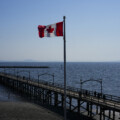
‘Not a guide to practical action’: David Frum on 60 years of George Grant’s Lament for a Nation
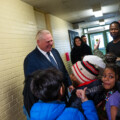
Ginny Roth and Brian Dijkema: Why Ontario should allow independent schools and unlock true choice in education
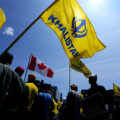
Need to Know: Canadian multiculturalism is ‘dangerously adrift’
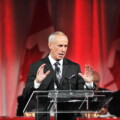
‘Disloyalty to a friend’: Sean Speer on the cultural tension captured by the recent clash between Don Cherry and Ron MacLean
